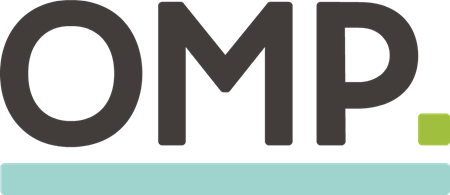
Smart tenders make successful projects: 3 lessons I have learned
Martin Thesling - November 30, 2023

Years of experience with projects for advanced software solutions have taught me a simple lesson about the tendering process: the more intense the human interaction is from the start, the greater the chances the project will be a success. Here’s what I recommend to project leaders when they’re preparing tenders, and why.
First, let me bring up the fundamental question: what do you want to achieve with your tendering process? You might say that you want to find the best solution on the market for your needs. A fair point, but a misleading one too, because do you really already know at that stage what you need exactly?
You probably know the shortcomings of your current solution, but much less about how you want to work in the future and what’s possible technically.
"If you draw up a detailed wishlist of your needs, you can unwittingly disqualify approaches and solutions you didn’t even think about, meaning that you’ll miss out on great opportunities."
In search of a solution partner
What you should be looking for, I firmly believe, is a solution partner you can trust and with whom you can go on a journey, long-term. A partner who understands your challenges, is ready to listen to your concerns, and can address any issues you might have. A solution provider, a company, with a vision but also a sense of honesty and realism.
How do you find such a company? By interacting with the people behind the solution! Because an advanced software solution is about people deploying technology for a specific purpose, it’s not about technology as such.
So, for anyone who is about to head up a tender process, I have three recommendations.
1. Forget specifications, start with an RFI
Blog post
You can skip the cumbersome job of writing specifications and requirements. The best thing to do is start off with a request for information, or RFI. In this RFI, you don’t define how the solution should work, you just lay out in general terms what you want it to do for you and your business. It’s important to highlight the challenges specific to your industry and company that need to be addressed, but stop short of saying how this should be done.
Send this RFI to about ten companies you have some experience with or who come recommended by trusted consulting firms such as Gartner.

Blog post
2. Spend time on workshops, not theoretical solution descriptions
Based on the response you get, you can probably narrow down your list of potential providers to maybe five. I’d recommend inviting each of them for a half-day or full-day meeting so that you can get acquainted with the people and get a feel for their solutions. While that may sound like you’re devoting a lot of your time, remember you’re not having to read through hundreds of pages of solution descriptions.
Don’t ask for a demo of what you think you need. The first thing you need to know is whether your candidate is ready to listen and experienced enough to grasp the intricacies of your business. Then let the candidate tell you what they think you need by means of a demo, draw inspiration from their experiences, and ask them on the spot how they would deal with some of your particular requirements.
You’ll then want to make a shortlist of two or three providers to move on to the most important stage — the deep-dive workshop. These will cover functional, technical, and commercial issues as well as project management. This will allow you to evaluate whether each individual solution provides the value you need and the return on investment you want, whether any risks are involved, and whether the style of collaboration is a good fit for your organization.
3. Reality-based use cases turned into business cases
Blog post

The deep-dive workshop program is where you’ll invest most of your time (remember you gained a lot of time by not having to read through responses to specifications). It’s essential to define a series of reality-based cases as a starting point for the workshops, outlining what needs to be achieved on a functional, technical, or other level. Don’t go for completeness, focus instead on the cases critical to you.
The discussions and interactions you’ll have during the workshops will allow the candidates to turn your use cases into convincing business cases. And, it’s at that point you can decide which solution partner is best for you, all things considered.
Blog post
Deep insight through human interaction
Most importantly, the workshops will be a foretaste of how you’ll be working with the solution provider in the future. Do the people know your industry and understand your business in enough detail? Are they proactive? Do they come up with smart suggestions and recommendations? Do they keep their promises? And are they fun to work with?
These intense human interactions will give you a depth of insight that a written response on hundreds of specifications can never achieve.
Looking for a solution partner, or just starting to think about it? Or maybe just browsing and saw something you like? Either way, contacting us might be the best thing you ever did.

Martin Thesling
Presales Lead at OMP DE
Biography
With more than ten years' experience specializing in engaging in the tendering process, Martin has collaborated as a pre-sales consultant with prospective customers from a range of industries, including logistics, consumer goods, chemicals, and life sciences, before taking on his current lead role.





